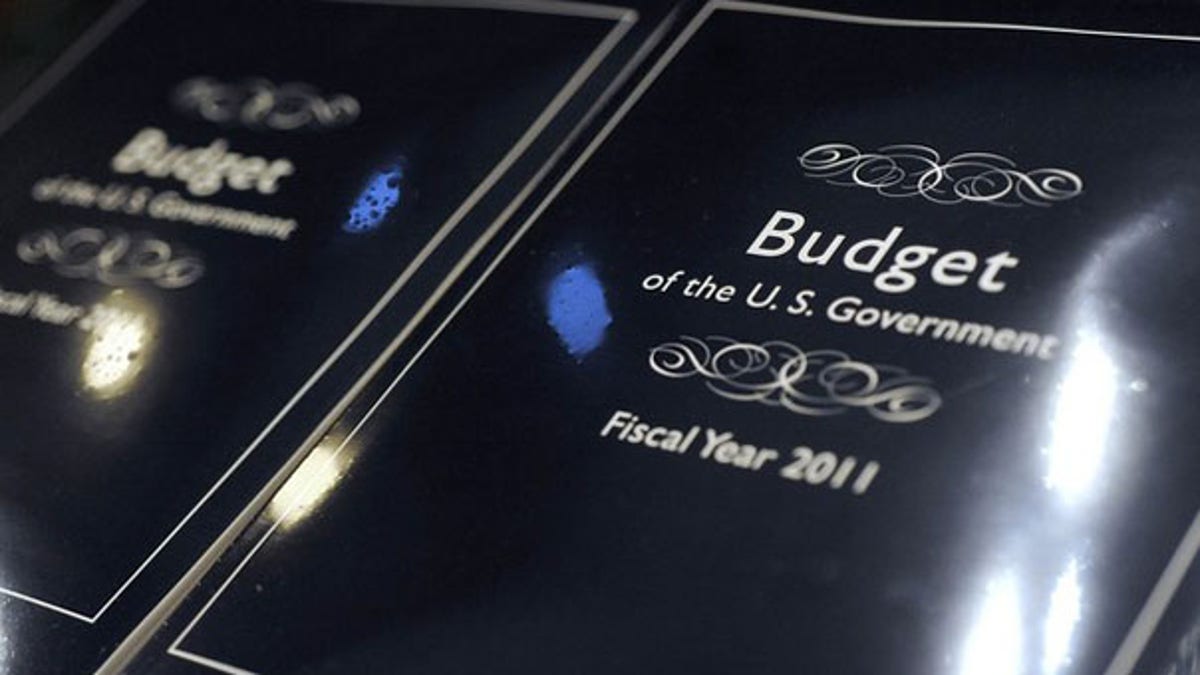
The cover of President Obama's 2011 budget is seen as copies are unpacked for distribution to Senate staff on Capitol Hill Feb. 1. (Reuters Photo)
The mission of the National Aeronautics and Space Administration (NASA) is to drive advances in science, technology, and exploration to enhance knowledge, education, innovation, economic vitality, stewardship of the Earth, and solutions to national and global challenges. The President's Budget will allow NASA to improve our knowledge of the Earth, explore space with humans and robots, foster strong partnerships with other nations, and educate and inspire the next generation of scientists and engineers.
Funding Highlights:
* Adds $6 billion to NASA's budget over five years and draws upon American ingenuity to enable us to embark on an ambitious 21st Century program of human space exploration.
* Initiates flagship exploration technology development and demonstration programs of "gamechanging" technologies that will increase the reach and reduce the costs of future human space exploration as well as other NASA, government, and commercial space activities.
* Embraces the commercial space industry and the thousands of new jobs that it can create by contracting with American companies to provide astronaut transportation to the Space Station — thus reducing the risk of relying exclusively on foreign crew transport capabilities.
* Ends NASA's Constellation program, which was planning to use an approach similar to the Apollo program to return astronauts back to the Moon 50 years after that program's triumphs.
* Extends the International Space Station and enhances its utilization, bringing nations together in a common pursuit of knowledge and excellence in space.
* Enhances the Nation's global climate change research and monitoring system, including reflight of a satellite that will help identify global carbon sources and sinks.
* Provides for a robust program of robotic solar system exploration and new astronomical observatories, including a probe that will fly through the Sun's atmosphere and an expanded effort to detect potentially hazardous asteroids.
* Revitalizes and realigns NASA to put in place the right workforce and facilities to function as an efficient 21st Century research and development agency.
Lays the Foundation for a Bold New Course for Human Space Flight. NASA's Constellation program — based largely on existing technologies — was begun to realize a vision of returning astronauts back to the Moon by 2020. However, the program was over budget, behind schedule, and lacking in innovation due to a failure to invest in critical new technologies. The President's Budget cancels Constellation and replaces it with a bold new approach that invests in the building blocks of a more capable approach to space exploration that includes:
* Research and development to support future heavy-lift rocket systems that will increase the capability of future exploration architectures with significantly lower operations costs than current systems—potentially taking us farther and faster into space.
* A vigorous new technology development and test program that aims to increase the capabilities and reduce the cost of future exploration activities. NASA, working with industry, will build, fly, and test in orbit key technologies such as automated, autonomous rendezvous and docking, closed-loop life support systems, in-orbit propellant transfer, and advanced in-space propulsion so that our future human and robotic exploration missions are both highly capable and affordable.
* A steady stream of precursor robotic exploration missions to scout locations and demonstrate technologies to increase the safety and capability of future human missions and provide scientific dividends.
Develops Technologies to Reduce Future Space Mission Costs, Expand Opportunities, and Grow the American
Economy. NASA will embark on a new agency-wide technology development and test program aimed at increasing the capabilities and reducing the cost of future NASA, other government, and commercial space activities. NASA will increase its support for transformative research that can enable a broad range of NASA missions.
Supports Extension and Enhanced Utilization of the Space Station. The International Space Station is poised to reach its full complement of international crew and laboratories in 2010. The President's Budget provides funds to extend operations of the Space Station past its previously planned retirement date of 2016.
Supports Promising Commercial Space Transportation. The Budget funds NASA to contract with industry to provide astronaut transportation to the International Space Station as soon as possible, reducing the risk of relying solely on foreign crew transports for years to come.
Commits Funds to Safely and Prudently Fly the Remaining Space Shuttle Flights. The President's Budget promotes a safe and orderly retirement of the Space Shuttle program by providing funding for the Shuttle to fly its final five missions, even if their schedule slips into 2011.
Improves Our Understanding of Global Climate Change. The Budget accelerates the development of new satellites the National Research Council recommended as Earth science priorities. The Budget also supports several research satellites currently in development, a campaign to monitor changes in polar ice sheets, and enhancements to climate models.
Increases Scientific Understanding of the Solar System and Universe. The Budget supports space science research grants and dozens of operating missions and telescopes currently studying the planets and stars as well as many more in development — including a telescope to succeed the Hubble Space Telescope, missions to study the Moon, and two Mars exploration missions. The Budget also funds early work on a mission that will make the closest-ever approach to the Sun.
Increases Support for Green Aviation and a More Efficient Air Transportation System. The President's Budget increases support for NASA's green aviation initiative by focusing on both innovative fundamental research and systems-level applications to reduce fuel needs, noise, and emissions of aircraft.
